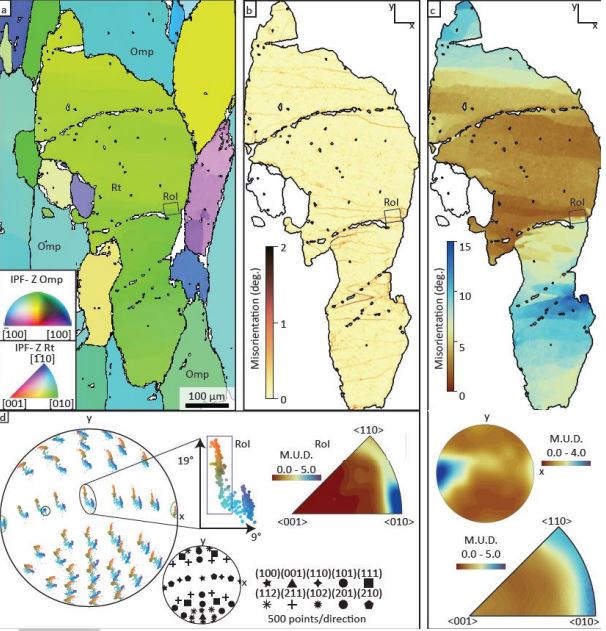What can we learn from trace element and dislocations distribution in Rutile crystals?
Rick Verberne and Hughetto investigated the trace-element migration in low-angle boundaries formed by dislocation creep in rutile within an omphacite vein of the Lago di Cignana unit (Western Alps, Italy). Crystal-plastic deformation of a large rutile grain results in low-angle boundaries that generate a total misorientation of ~25°. Dislocations constituting one of these low-angle boundaries are enriched in common and uncommon trace elements, including Fe and Ca, providing evidence for the diffusion and trapping of trace elements along the dislocation cores. The authors demonstrate that the role of dislocation microstructures as fast-diffusion pathways must be evaluated and accounted for when applying high-resolution analytical procedures as compositional disturbances might lead to erroneous interpretations for Ca and Fe. In contrast, our results indicate a trapping mechanism for Zr, that should be considered when applying Zr-in-rutile geothermometry.

If you want to learn more about it please check our article online at Journal of Metamorphic Geology
